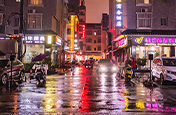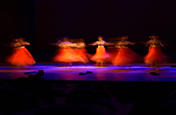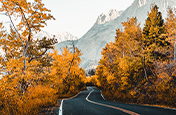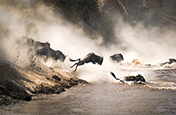Astrophotography for beginners.
Taking shots of the night sky is about more than pointing your camera up. Exploring the principles of astrophotography will help you capture stunning images.
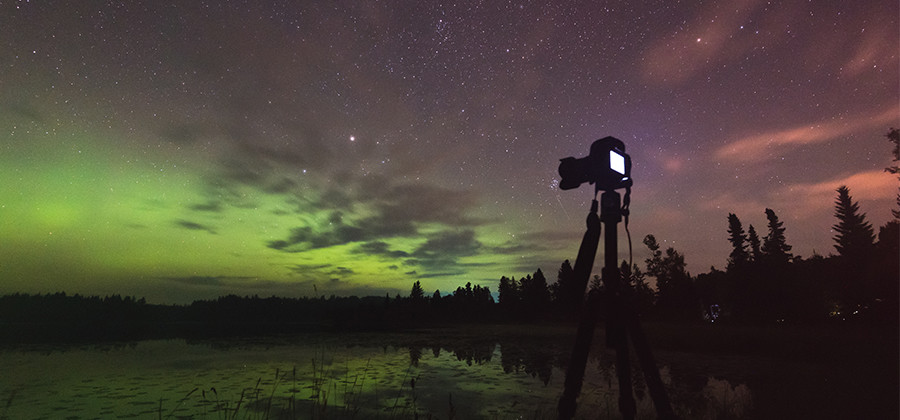
Start exploring the Milky Way with your camera.
The night sky can be the ultimate canvas for a photographer — there’s something magnetic about it that keeps people looking up at the stars. With the right equipment and knowledge, you can take gorgeous pictures of everything from star clusters to the new moon, joining your fellow astrophotographers in mapping out deep space.
Be intentional with long exposures.
Before you set out on any photography venture, define your intentions. What kinds of photos do you want to take? Do you have the equipment and knowledge to do it? Explore these possibilities to discover which ones seem most interesting to you.
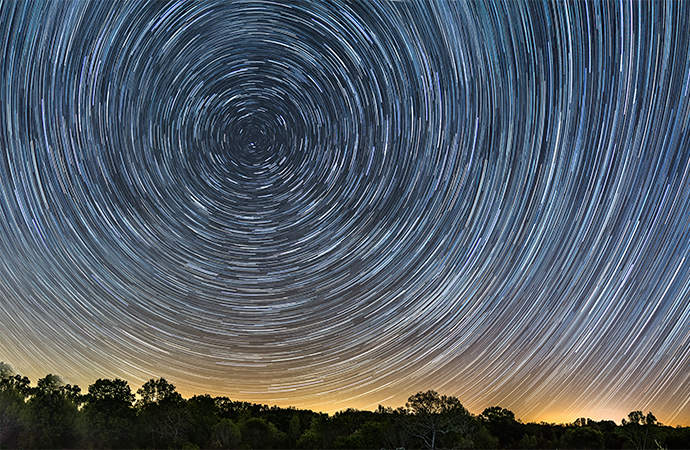
Light painting: Light painting is a popular technique that many photographers use to great effect, and not just with the night sky. Light paintings are long exposures that cause points of light to blur and travel, creating interesting photographs that are scribbled with light. Many astrophotographers use this method to capture the rotation of the Earth through the movement of the points of light of the stars.
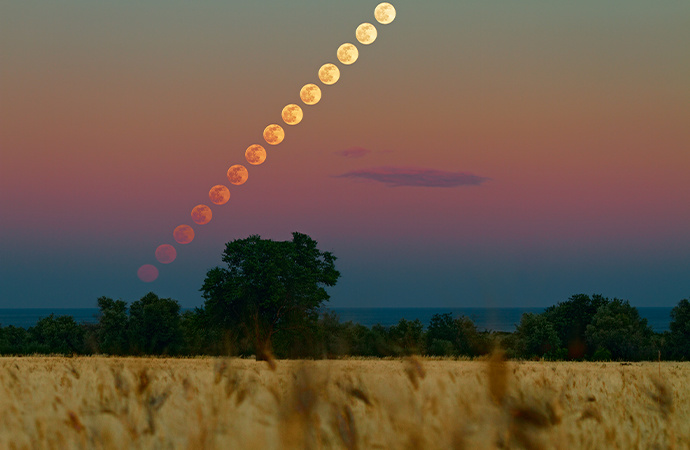
Time lapse: Time-lapse astrophotography is the process of setting up a camera to take photos at regular intervals and then combining those photos into a video, so you can see movements over a long period of time. If you’ve ever seen a video of the sun rising really fast, you’ve seen time-lapse photos.
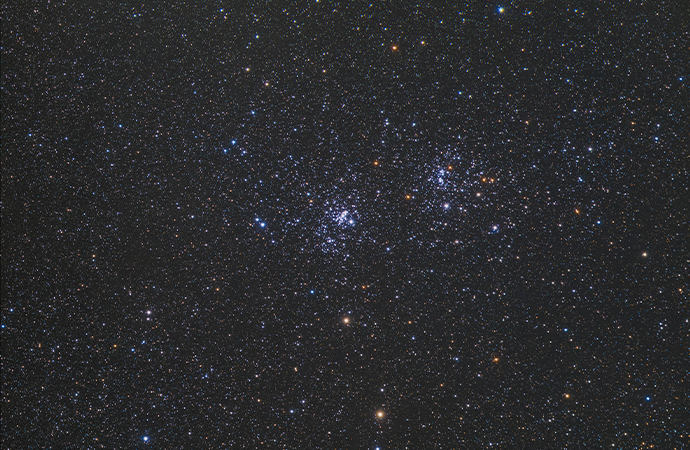
Starscapes: Capturing a massive view of the stars requires equipment and know-how, but the results can be spectacular, producing views of the stars that you’d be otherwise unable to capture with the naked eye.
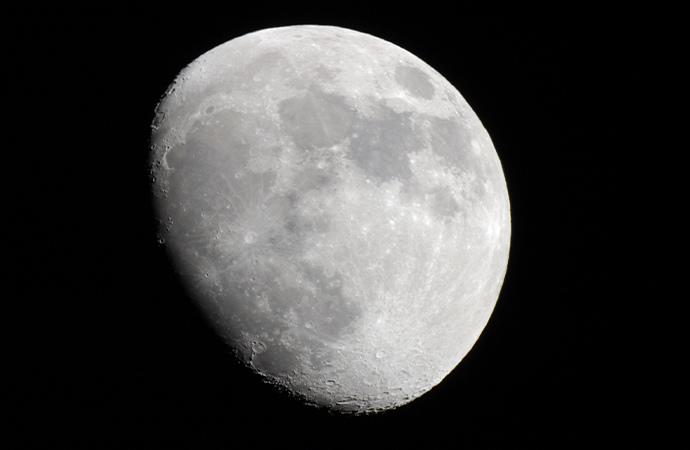
Close-ups: Using a telescope, you can take truly spectacular images of celestial bodies. This style of photography requires a bit more equipment than your standard photo adventure.
No matter what types of photos you’re taking, anchoring the frame is key. “You really want something in the frame to anchor the photo,” photographer Jeff Carlson says, “Whether it’s trees or a landmark in the foreground, you want to have something that's going to frame the sky so that it doesn’t just look a scene from a space movie.”
Be aware that because you’re shooting in low light, you must leave the shutter open for a longer time than you would in daylight. Due to the rotation of Earth, celestial bodies will have light trails in the resulting photo. “Even though your camera isn’t moving because it's on a tripod, everything else is moving because you’re on a rotating planet,” Carlson says. “You don’t want all the stars to look blurry because the planet has shifted slightly.” The 500 rule can be helpful for avoiding unwanted movement in your night sky shots.
Finding the right tools for astrophotography.
Once you’ve determined what type of photography you’re interested in, it’s time to get your tools together.
While smartphone cameras are making enormous technological leaps, you’re going to want the benefits of a DSLR camera with interchangeable lenses. And no matter what type of night sky photography you’ve chosen to shoot, a tripod is a must.
“If you want to do astrophotography or night photography, you want cameras with larger sensors.”
It’s also a good idea to invest in a digital camera with high ISO potential. “If you want to do astrophotography or night photography, you want cameras with larger sensors,” says photographer Derek Boyd. “High-quality cameras that shoot ISO 6,400 and up are going to give you cleaner images.”
If you’re looking to create a deep sky photography rig for capturing detailed images of celestial bodies, you’ll need some more-advanced equipment — most likely an equatorial mount, a telescope, a guide telescope, and a few other pieces of necessary equipment.
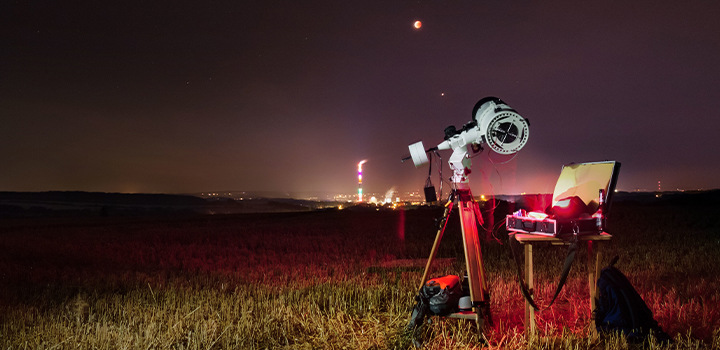
Lens selection is key. For introductory astrophotography, get a wide-angle lens with a short focal length. The ability of these lenses to open their apertures wide and capture as much light as possible will help get quality images. Additionally, if you’re trying to capture longer exposures, an equatorial mount will be indispensable. These mounts compensate for the rotation of the Earth, which will help prevent the blurring of your images as the planet moves.
How to take astrophotography photos.
To get the best photos, you want a dark sky far away from light pollution that will reduce the quality of your images. If you have a favorite hiking spot, pack up your tripod and get out there.
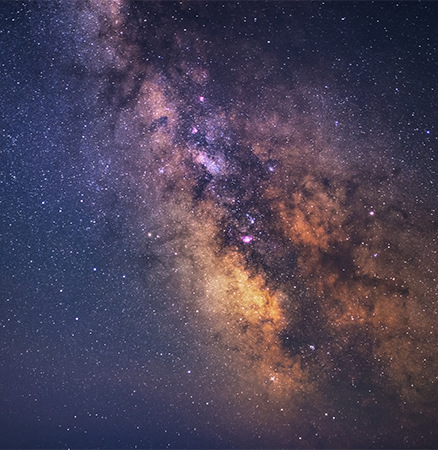
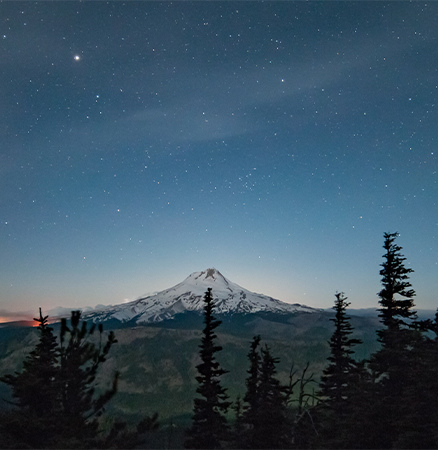
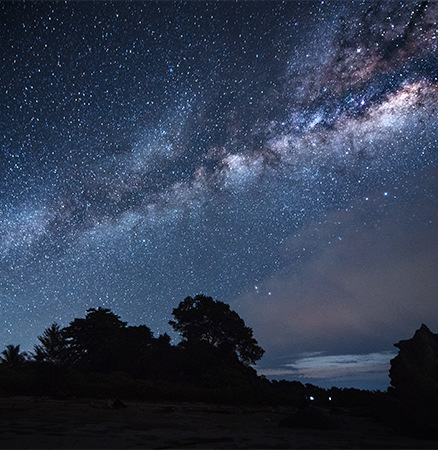
Once you’ve arrived, here are some key considerations for capturing your astrophotos:
ISO: ISO refers to how light sensitive the film in your camera is. In modern digital cameras, it refers to the sensitivity of the sensor in the camera to light. Higher ISO settings will result in brighter images, but they will also increase the graininess of your images. For astrophotography, you want to keep the ISO as low as you can, while still enhancing the light sensitivity, in order to keep your images of the sky as crisp and clear as possible.
Shutter speed: Shutter speed determines how long the shutter on your camera is going to remain open and allow light to hit the film in your camera or its digital sensor. It’s measured in relation to seconds, so a fast shutter speed might be 1/1,000 of a second, while a slow speed might be one second. For night photography, you’re going to have to use a tripod, because you need to use really slow shutter speeds, and you don’t want your image to blur. Try exposures of 5, 8, or even 10 seconds, and examine your results to see what looks best.
Aperture: You’ll likely need to use a lower aperture setting (called an f-stop), because while higher f-stops will allow for an image with more depth of field, it will be difficult to get enough light for a good exposure. Because you’re not likely to be drawing attention to depth of field in photos of the stars, higher aperture settings will be the way to go (with exceptions of course).
Ultimately, the important thing is to keep an open mind, experiment, and see what you come up with, so you can see what equipment you need for future outings.
Ways to edit your astrophotography.
A huge part of the astrophotography process involves editing and tweaking images to produce their maximum color potential. You’ll have images that look washed out from light pollution or other factors. Adobe Photoshop and Adobe Lightroom give you the tools to make your images look crisp and clean.
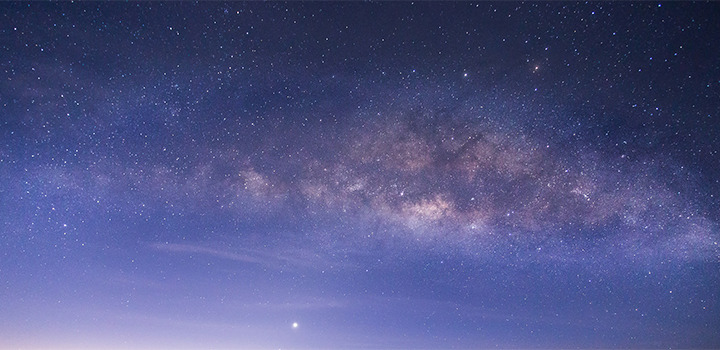
Explore these to start building your astrophotography editing skills:
Browse Adobe’s enormous library of help documentation to discover the tips, tools, and tricks you’ll need to make your astrophotos shine even more.
Astrophotography is one of the more equipment-intensive and technical forms of photography, but with an open mind and an entrepreneurial attitude, you can produce astounding images that make everyone want to stargaze. Remember, astrophotography is an adventure. Anthony Pidgeon, a long-time professional photographer, has this advice: “With night (and astro) photography, embrace the random things that happen. You can come up with some really cool stuff if you’re more in that mindset.”
Contributors
Do more with Adobe Photoshop Lightroom.
Edit photos easily with Lightroom presets, Super Resolution, easily share photos from any device, and access your projects anywhere with cloud photo storage management.
You might also be interested in…
Night Photography.
Low light doesn’t have to equal low quality with these tips for successful nighttime photos.
Discover how adjusting shutter speed can help you capture clean shots or motion-filled moments.
Building a great landscape photo.
Explore ways to artistically capture scenic views with tips on landscape photography.
Tips for capturing nature photos of all kinds.
Explore the possibilities of nature photography, from animals in motion to sprawling landscapes.
Lightroom plan
Edit, organize, store, and share photos from anywhere.
7 days free, then AED38.85/mo.
Photography
Get Lightroom, Lightroom Classic, Photoshop, and 20GB of cloud storage. 7 days free, then .../mo.
